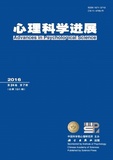Abnormal mental imagery is a common phenomenon across many emotional disorders. From a perspective of mental imagery, many researchers tried to understand the psychopathology of posttraumatic stress disorder (PTSD), depressive mood, emotions of bipolar disorder, and social anxiety. Empirical research mainly focused on two typical symptoms, which were flashbacks in PTSD and overgeneral memory, and emphasized on the functions of mental imagery in maintenance of emotional symptoms. Overall, three types of pathogenic factors of emotional disorders were underlined, including abnormal processing in memory formation and retrieval, negative reinforcement of cognitive and behavioral protective strategies, and cognitive biases toward events and self. Existing interventions and trainings targeting or using mental imagery can be divided into four categories: reducing negative images, changing contents of negative images, enhancing ability of positive images, and increasing concreteness of memory. Future directions include further analysis on the functions of intrusive imagery, exploration of the relevant psychopathology models, and expanding studies on intervention and training.




